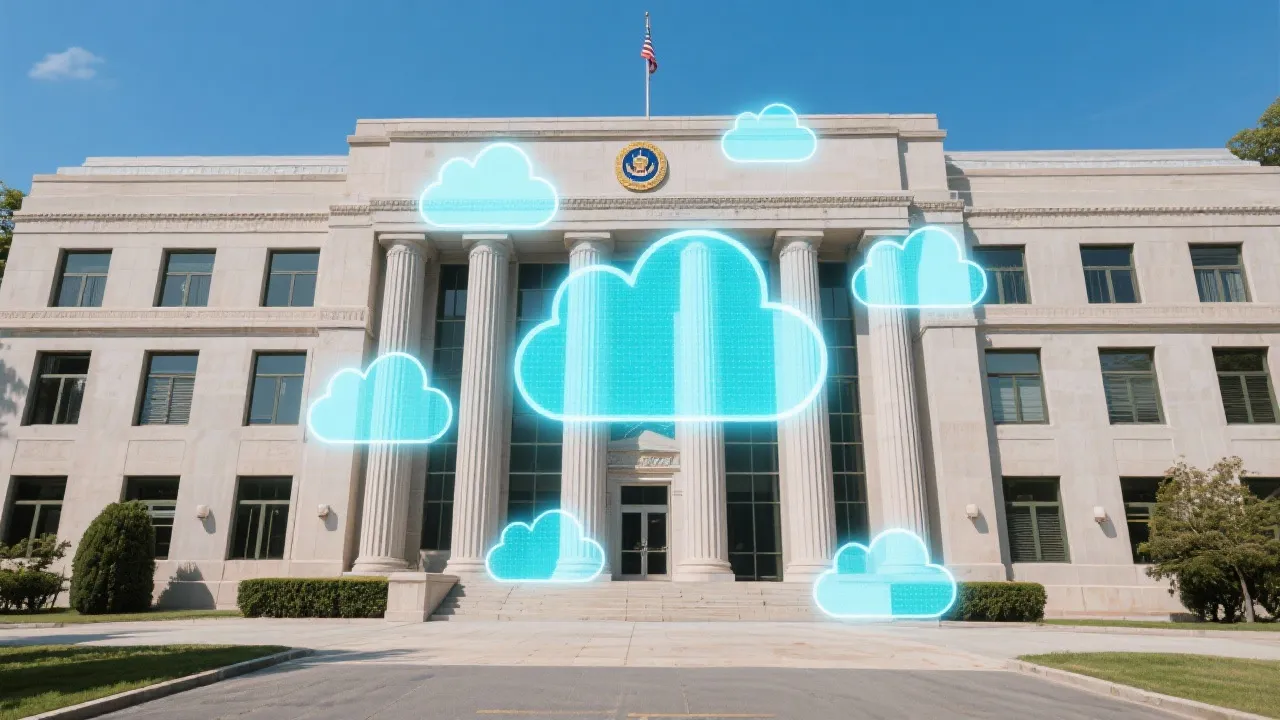Enhancing Cloud Security for Government Agencies
Government agencies face unique challenges in safeguarding their cloud systems, juggling data sensitivity, compliance, and operational continuity. This article delves into security strategies for agencies, highlighting encryption, access controls, and emerging trends to shield their digital environments effectively and maintain public trust.

Introduction to Government Cloud Security
Public sector organizations encounter distinct hurdles while securing cloud systems. Protecting confidential information, adhering to policy requirements, and ensuring uninterrupted services are essential tasks. This piece examines available security measures for these agencies, covering encryption, access policies, threat recognition, and incident response, all crucial for data protection in government cloud services. Additionally, it discusses the implications of failing to secure cloud environments and the impact on public trust.
Government Agency Cloud Security Solutions: Safeguarding Crucial Data in Today's Era
Due to swift technological changes, governmental bodies must tackle specific issues in keeping their secure data protected. As cloud usage grows, these organizations must navigate complex security challenges, ensuring data safety while benefiting from this dynamic technology. This article highlights the importance of cloud security for government institutions, indicating essential points, top practices, and new trends in this significant area. Furthermore, the increasing necessity for transparency in the public sector further emphasizes the need for robust cloud security measures that safeguard sensitive data while providing accountability to citizens.
Recognizing the Importance of Cloud Security for Government
Government bodies manage huge volumes of critical information, including citizens' personal details, financial data, and national security intelligence. It is vital to protect this data, as breaches could lead to serious consequences, including loss of public confidence and potential legal ramifications. Cloud solutions offer benefits like flexibility, scalability, and efficiency, making them appealing choices for these agencies. However, the inherent risks in shared cloud spaces must be addressed effectively. This duality—leveraging cloud efficiency while managing risk—presents a fundamental challenge that requires a nuanced and informed approach.
Crucial Aspects of Cloud Security Adoption for Government Bodies
As these agencies move to the cloud, they must consider several important factors for data security. First, detailed risk evaluations must be performed to recognize vulnerabilities and threats unique to their systems. They need to understand the sensitivity of stored data, current access controls, and potential impacts of a breach. Moreover, implementing strong encryption for data in storage and transit is essential to keep unauthorized access at bay. In addition to encryption, agencies should instill a culture of security awareness among employees. Training staff to recognize phishing attacks, social engineering tactics, and other common cybersecurity threats can significantly reduce an organization's risk profile.
Optimal Practices for Strengthening Cloud Security
Beyond initial considerations, government entities can boost their cloud security through various top endeavors. Employing multi-factor authentication (MFA) adds a higher security layer on accounts. Consistent software and system updates address known vulnerabilities. Additionally, using intrusion detection systems helps monitor network activities for unusual patterns, allowing swift response to potential security breaches. Furthermore, regular audits and security assessments are crucial in identifying gaps in security protocols and ensuring compliance with standards such as the Federal Risk and Authorization Management Program (FedRAMP). Implementing a robust incident response plan is also essential, enabling agencies to react promptly and effectively to security incidents when they occur, thus minimizing damage and restoring operations more quickly.
New Directions in Government Cloud Security
Cloud security is constantly evolving as technology advances, introducing new approaches to combat emerging threats. Government stakeholders should keep updated on progress and consider integrating innovative solutions to enhance their defenses. Zero-trust security, for example, requires verification for all users and devices before accessing resources. This model minimizes the implicit trust traditionally granted to internal users and devices, shifting security to a more granular level. AI and machine learning offer automation for security tasks, real-time threat detection, and anomaly management. These technologies can help in the predictive analysis of user behavior to identify potential threats before they escalate into significant breaches.
Compliance and Regulatory Considerations
Compliance with various regulations is an integral part of the cloud security framework for government agencies. Regulations such as the Federal Information Security Management Act (FISMA), the Health Insurance Portability and Accountability Act (HIPAA), and the Payment Card Industry Data Security Standard (PCI DSS) dictate the necessary security controls that organizations must implement. Agencies must ensure their cloud service providers meet these standards and often require a shared responsibility model that defines the security obligations of both the agency and the provider. Regular training and compliance audits are essential in maintaining adherence to these regulations, instilling a strong sense of accountability, and ensuring that security lapses do not occur due to ignorance or oversight.
The Role of Cloud Service Providers in Security
Cloud service providers (CSPs) play a critical role in the security of government cloud environments. These providers often offer a range of security tools and services that agencies can leverage to bolster their security posture. Understanding the shared responsibility model is crucial; while CSPs may secure the underlying infrastructure, agencies are responsible for securing data and applications deployed in the cloud. Therefore, careful selection of a CSP is vital, as it must align with the agency's security requirements and compliance needs. Agencies should thoroughly evaluate a provider’s security certifications, incident response capabilities, and track record of handling breaches.
Incident Response Planning for Government Agencies
Having a well-defined incident response plan is essential for government agencies utilizing cloud services. Such a plan should outline specific steps to take in the event of a data breach or security incident, focusing on minimizing damage and recuperating efficiently. Key components of an incident response plan include identifying an incident response team, outlining communication strategies, documenting procedures for containment, and ensuring a post-incident review to learn and adapt from any breaches. Government agencies must also ensure their incident response plan is regularly tested through simulations to prepare stakeholders for real-world scenarios and enable the organization to respond effectively under pressure.
Integrating Emerging Technologies in Cloud Security
The integration of emerging technologies into cloud security frameworks is essential for government agencies looking to stay ahead of the curve. Technologies such as blockchain can enhance security through decentralized data storage, providing immutable records that can deter tampering and theft. Similarly, the use of biometric authentication can greatly enhance security protocols by adding an extra layer of identity verification that is difficult to breach. Additionally, utilizing threat intelligence platforms allows agencies to gather data on potential threats and vulnerabilities from various sources around the globe, enabling them to prepare and adapt their security policies proactively.
Cost Considerations in Implementing Cloud Security
Budget constraints present a persistent challenge for government agencies seeking to implement robust cloud security measures. While it may be tempting to prioritize cost-cutting over security, the financial ramifications of a data breach can far exceed the investment required for comprehensive security solutions. Agencies must perform cost-benefit analyses to justify security expenditures, considering factors such as potential loss of public trust, legal fees, and recovery costs associated with breaches. Moreover, strategies for optimizing costs, such as open-source security tools or cloud-native security features provided by CSPs, can offer cost-effective solutions without sacrificing protection.
Collaborative Approaches to Cloud Security
Collaboration within government agencies and between various stakeholders is crucial in enhancing cloud security. Sharing intelligence and best practices across departments fosters a comprehensive understanding of security challenges, leading to improved threat mitigation strategies. Furthermore, participating in inter-agency working groups or engaging with the private sector can provide insights into emerging risks and effective security measures. Additionally, collaboration with academic institutions can facilitate research into innovative security technologies and practices that can be adopted by government bodies.
The Future of Government Cloud Security
As government agencies continue to evolve in their cloud strategies, the future of cloud security lies in developing adaptive, robust, and intelligent security frameworks. The increasing prevalence of remote work, the expansion of Internet of Things (IoT) devices, and the rising sophistication of cyber threats necessitate dynamic security postures that can swiftly respond to changes in the threat landscape. Agencies must invest in continuous training for their staff, engage with external experts, and embrace a culture of security that prioritizes vigilance and preparedness. Additionally, as the regulatory landscape continues to evolve, collaboration with policymakers will be necessary to ensure that cloud security frameworks meet legal standards while adapting to emerging technologies.
Conclusion
The shift to cloud solutions for government agencies brings new opportunities and challenges. While cloud technology offers greater productivity, savings, and scalability, it also presents unique security concerns. Implementing strong security methods, including encryption, continuous monitoring, and incident response planning, is crucial. Collaboration with cloud service providers ensures adherence to necessary standards. By implementing these strategies, agencies can maximize cloud benefits while ensuring data security and public confidence. As technology continues to advance, government agencies must remain proactive in their security efforts, adapting to new threats and embracing innovative solutions that safeguard the integrity of critical data and maintain public trust in governmental operations.



